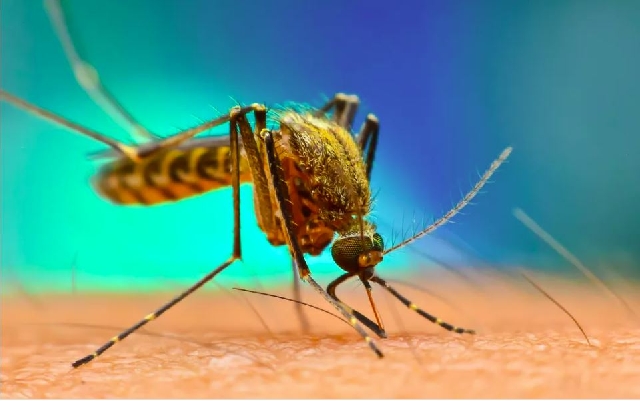Malaria recorded 3 times more in rural areas than urban centres – GSS
 Mosquito is the carrier of the Malaria parasites
Mosquito is the carrier of the Malaria parasites
Malaria is three times more prevalent in rural than urban Ghana, the Ghana Statistical Service (GSS) has disclosed.
Findings from the 2022 Ghana Demographic and Health Survey (DHS) indicate that malaria prevalence in children aged 6 to 59 months is 8.6 percent according to microscopy results.
The malaria prevalence in rural areas which is 12.8 per cent is about three times that of urban areas which stands at 4.3 per cent.
These were contained in a statement released by the Ghana Statistical Service to commemorate World Malaria Day today, 25 April 2023, on the theme: “Time to deliver zero malaria: invest, innovate, implement”.
World Malaria Day according to the World Health Organisation (WHO) is an occasion to highlight the need for continued investment and sustained political commitment for malaria.
Figures from the GSS further showed that the Greater Accra has the lowest prevalence of malaria which is 2.0 per cent followed by Western North, 4.4 per cent, and Volta 6.4 per cent.
The regions with the highest prevalence of malaria according to microscopy results are Oti, 15.0 per cent, Upper West, 13.4 per cent, and the Upper East, 12.2 per cent regions.
In all, half of the 16 regions record malaria prevalence above 10 per cent.
The survey results also indicate that the prevalence of malaria in children has declined over the past eight years, falling by more than a third from 26.7 per cent in 2014 to 8.6 per cent in 2022.
Administrative data provided by the Ghana Health Service from District Health Information Management System (DHIMS) indicates that the malaria prevalence rate among pregnant women has also declined from 3.3 per cent in 2019 to 2.4 per cent in 2022.
The malaria prevalence in 2022 is highest in the Oti Region 7.0 per cent, followed by the Savannah Region, 5.4 per cent, which are the only two regions to record prevalence more than double the national average. The lowest prevalence in pregnant women is recorded in the Greater Accra Region, 0.2 per cent.
Overall, the total number of Outpatient Department (OPD) malaria cases recorded in DHIMS declined from 6.1 million in 2019 to 5.2 million in 2022.
The East Mamprusi district in the North East Region with 73,782 cases has the highest number of OPD malaria cases followed by Jaman North’s 63,776 and Jaman South’s 55,672 both in the Bono Region. Eight in every 10 districts (211 of 261 districts) districts have more than 10,000 OPD malaria cases in 2022.
The GSS indicated that the 2022 Ghana Demographic and Health Survey Key Findings Report will be released in May 2023.
Trending News

Weija Water Treatment Plant to shut down for scheduled maintenance today Dec. 19
07:07
60 lives lost at Madina Zongo junction as pedestrians ignore footbridge-MCE
07:10
Bawku report submitted; Mahama to respond within 24 hours
20:25
NDC confident ahead of December 30 Kpandai rerun
07:27
Part (3) of many: Why US not likely to extradite Ken Ofori-Atta despite A-G's request
07:56
Accra–Kumasi Expressway to offer alternative route, not replace existing highway – Roads Minister
06:55
Mind your words on Bawku — Otumfuo advises Cletus Avoka
19:11
Ghana launches blue economy strategy to boost national development
07:25
Kennedy Agyapong vs Atta Akyea: Alex Tetteh invoke curses on former MP over alleged meeting with Ken
04:07
Trade Minister engages tomato growers and traders to resolve value chain challenges
01:51




